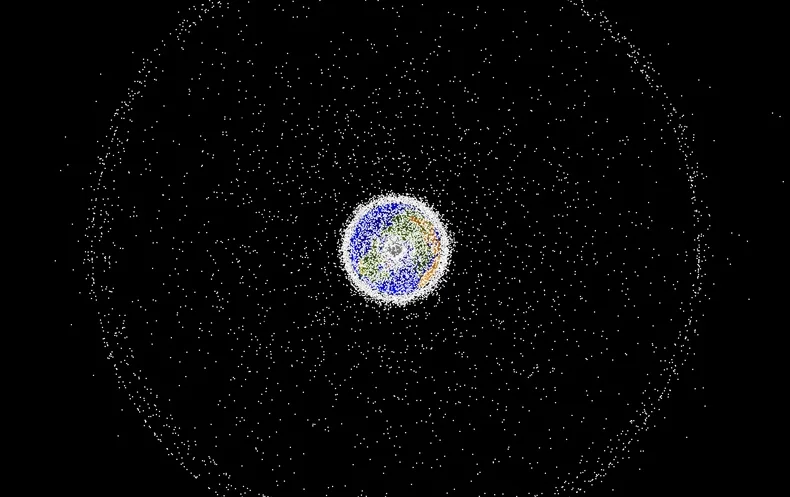Old Russian rocket motor breaks up in orbit, generating new cloud of space debris....
- ayush devak
- May 9, 2022
- 2 min read

An Earth-orbiting object cataloged as #32398 broke up on April 15, the U.S. Space Force's 18th Space Defense Squadron tweeted on Tuesday (May 3). Sixteen pieces of space debris associated with the event are currently being tracked, the squadron added.
Object #32398 was an ullage motor from a space tug that helped deliver three Russian GLONASS satellites to orbit in 2007, according to journalist and author Anatoly Zak, who runs RussianSpaceWeb.com. (GLONASS is Russia's version of the GPS navigation system.)
Those GLONASS spacecraft lifted off atop a Russian Proton rocket, the upper stage of which had two small ullage motors, according to astrophysicist and satellite tracker Jonathan McDowell, who's based at the Harvard-Smithsonian Center for Astrophysics. Ullage motors accelerate their parent rocket stages slightly, to ensure that the boosters' fuel is positioned in the tanks properly for engine restarts in orbit, McDowell explained in a series of tweets on Tuesday. (You can't rely on gravity to pull the propellant down toward the engine, after all.)
These Proton upper-stage ullage motors are known as SOZ motors, and there are currently 64 of them in Earth orbit, McDowell tweeted. The acronym is short for "Sistema Obespecheniya Zapuska," which translates roughly as "Launch Assurance System," he said.
"The SOZ motors don't use up all their propellant when they fire. And they have an unfortunate tendency to go bang years or decades later, leaving a bunch of debris in highly elliptical orbit. At least 54 SOZ motors have now exploded," McDowell tweeted.
The SOZ motor that just blew up had been racing around Earth in a highly elliptical path, getting as close as 241 miles (388 kilometers) and as far away as 11,852 miles (19,074 km), McDowell said in another tweet, noting that "the debris will take quite a while to reenter."
"So — this debris event was predictable and is well understood; still very unfortunate," he wrote.
Space junk is a growing problem for satellite operators and mission planners. The European Space Agency (ESA) estimates that about 36,500 pieces of debris at least 4 inches (10 centimeters) wide are currently whizzing around Earth. And Earth orbit likely harbors about 1 million objects with diameters between 0.4 inches and 4 inches (1 to 10 cm), according to ESA.
Russia added to the debris population with a widely condemned anti-satellite (ASAT) test in November 2021. The nation destroyed one of its own defunct satellites with a missile, spawning a new debris field in the same orbital neighborhood as the International Space Station (ISS). ISS operators have had to conduct engine burns to dodge the Russian ASAT debris.

Credit: Space.cpm
YouTube: A broken Russian rocket Engine has generated A New Cloud of Space debris - YouTube & Space debris: A problem that’s only getting bigger - YouTube
Website: Aeronautics and astronautics | Brahmastra Aerospace Systems | Chennai (brahmastraspace.org)



Comments